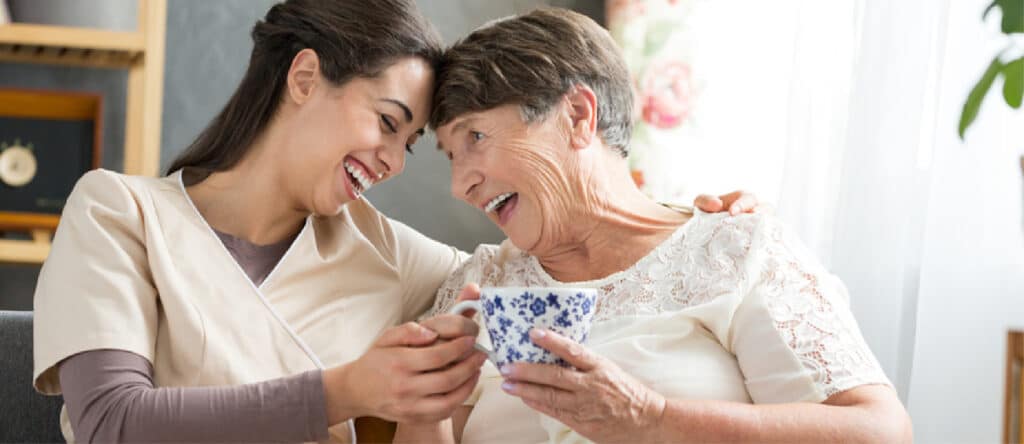Nonverbal Communication: Five Types of Nonverbal Communication Techniques
Nonverbal Communication: There are times when your elderly family member may not always understand what you’re saying to her.
That’s when nonverbal communication along with what you’re trying to say is even more important. Whether your senior is experiencing cognitive changes or some other issue affecting communication, you may want to try using some of these techniques.

Elder Care in Bridgehampton NY: Nonverbal communication
Eye Contact
It can be so important to have eye contact with your senior before and during the time you’re talking with her. This is even more urgent if your elderly family member is hard of hearing or if she’s experiencing cognitive changes. Eye contact ensures that she’s able to focus on the fact that you’re sharing something with her.
Gentle Touch
Gaining your senior’s attention is important, and one way to do this is with a gentle touch. Gentle touch reminds your senior that you’re there with her and lets her know that you need her attention. Hugging your senior or just putting a gentle hand on her arm can be enough.
Gestures and Body Movements
Body movements and gestures can be particularly helpful when you and your elderly family member are trying to communicate effectively. You might gesture to an object you’re talking about, for example, or you might lean forward when you’re trying to connect with her. Many of these body movements and gestures are unconscious, but they still help to convey meaning.
Facial Expressions
Most people rely more on facial expressions in communication than they realize. Facial expressions help people to understand how people around them are feeling. When someone is happy and is saying happy things, their facial expressions typically reflect this as well. It’s confusing when someone’s words and facial expressions don’t match up, and that’s true for your senior, too.
Nonverbal Communication: Tone of Voice
Parts of your verbal communication are nonverbal, too. Your tone of voice when you talk to your elderly family member tells her a lot. Just like with facial expressions, if your tone of voice doesn’t match what you’re saying or your body language, that can be confusing and frustrating for your senior. When your tone of voice matches, that can help her to understand what you’re saying on a deeper level.
Getting used to using nonverbal communication techniques regularly with your senior can take a little practice. Elder care providers can help you and your senior to learn how to use these techniques much more effectively while also helping in other ways.
If you or an aging loved one is considering hiring Elder Care in Bridgehampton, NY, call the caring staff at Artful Home Care today at 631-685-5001.
- What Can Seniors Do to Improve Their Social Health? - April 21, 2025
- The Hidden Safety Benefits of an Organized Home - April 3, 2025
- Artful Home Care Presents Planning Your Legacy: An End-of-Life Strategy Session - March 27, 2025

